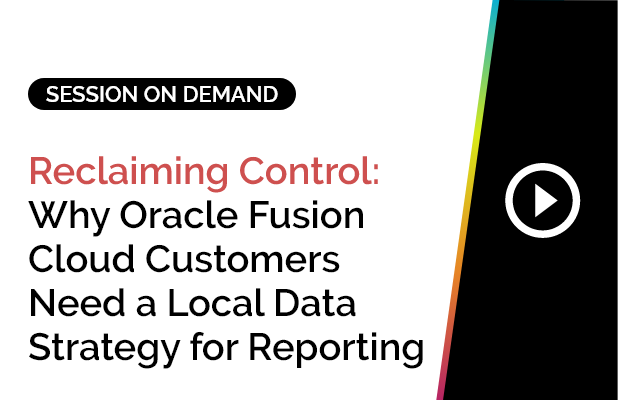Introduction
When I first started working in Business Intelligence (BI) in the 1980s, I couldn’t have imagined how far the field would evolve – or how long I’d be privileged to be part of that evolution. What began as a niche corner of data and decision-making has become one of the most transformative disciplines in business today.
Over more than four decades, I’ve watched BI grow from manual reporting and early database systems into the era of Artificial Intelligence (AI) and predictive analytics. Along the way, I’ve learned that while technology changes rapidly, the core purpose of BI – turning data into meaningful insight, has remained timeless.
The Early Days – The 1980s
The term Business Intelligence actually dates back to 1865, when Richard Millar Devens described a banker who gathered market intelligence before making decisions. But when I started in the 1980s, BI was gaining new life as companies began using data to drive measurable business outcomes. In those days it wasn’t called BI but DSS (Decision Support Systems), MIS (Management Information Systems), EIS (executive Information Systems) but the benefit of BI was easy to define—it improved the bottom line.
The early adopters were the big names in Consumer Packaged Goods and Pharmaceuticals – Unilever, Procter & Gamble, and Glaxo. They understood the power of information to drive growth and efficiency. The systems in use were 4th Generation Languages (4GL) such as Express, Essbase (both multidimensional) and Focus (relational). These companies would use these tools to analyse customer behaviour, in relation to advertising spend to predict measures such as Repeat Purchasing, Product Placement and Market Penetration, amongst others.
Back then, BI was less about dashboards (although we did have a Techtronix monitor and printer that could produce lovely graphs) and more about insight. We were building systems that helped organisations understand their operations in new ways, even if the technology was primitive by today’s standards.
The 1980s and 1990s saw the rise of relational databases and the first real BI tools. Informatica released the first ETL tool, while Microsoft Excel began its ascent as a cornerstone of analytical work. It was an exciting time – BI was moving from theory to practice, one dataset at a time.
The 1990s – Practical Intelligence in Action
As hardware and software advanced, BI solutions became more accessible and cost-effective. Still, the term “Business Intelligence” was often misunderstood. When we used to exhibit at events such as the UK Oracle User Group even in the late 90s people would come to our stand and ask “what is Business Intelligence?”
I remember a series of projects from that era that, looking back, defined what BI truly meant – insight leading to action.
One project was with a major UK electricity generator in the early 1990s, right after privatisation. We built a pricing system using 15-minute data intervals across all customers to calculate tariffs that guaranteed profit margins even when forward buying. There were no dashboards, just raw intelligence that delivered results.
Another project involved a central government department. We analysed massive data sets across cost centres to allocate budgets based on caseloads, case types, completion times, and payroll costs. It was basic by today’s standards but revolutionary in its impact.
Then, a mid-90s engagement with a government agency had us tracking more than 8,000 cases per year. Much of the data was unstructured text, but we turned it into actionable intelligence, helping them spot patterns and inefficiencies that changed their entire workflow.
Those systems didn’t depend on IT departments or fancy visualisation tools. They provided insight that lasted for years. Some of those solutions remained in use for over a decade. For me, that was, and still is, the essence of BI: clarity from chaos.
The Noughties – Integration and Real-Time Data
By the early 2000s, the BI world was evolving quickly. ETL tools and integration technologies allowed organisations to consolidate data from multiple sources. The era of real-time BI arrived – businesses could access and analyse data as it was generated, enabling more immediate decision-making.
BI also became democratised. Tools that had once been the domain of large enterprises were now accessible to smaller organisations. Yet, even with better access, many struggled to define what BI actually meant. Our company mantra was “power to the users”.
Was BI a technology? A set of tools? Or was it a mindset: a culture of informed, data-driven decision-making?
For me, it was always the latter. BUT it required all three to be effective.
The 2010s – Predictive Analytics and the Rise of AI
The 2010s marked another turning point. Predictive analytics, Big Data, and machine learning redefined how we approached intelligence. BI stopped being just descriptive (“what happened”) and started becoming predictive (“what’s likely to happen next”). Although some tools in the 80s like Express understood the dimension of time and would allow trendsetting and forecasting – Monte Carlo Random Simulation was one of my favourites.
AI allowed us to uncover insights that humans alone might never spot. BI tools became intuitive, visual, and smart therefore guiding decisions, recommending actions, even predicting outcomes.
But despite all this progress, one lesson stood out: technology means nothing without understanding.
During this decade, I found myself returning to the same question I’d been asking since the 1980s: What is Business Intelligence?
When I asked others, the answers varied:
“BI is the art of turning raw data into actionable intelligence.”
“It’s making sense out of chaos.”
“It’s discovering what you didn’t even know to ask.”
For me, BI has always been about that last one – finding the unknown unknowns.
The Present – BI Meets AI
Today, we’ve reached another defining moment. BI and AI are now inseparable. BI provides the foundation – the structure, governance, and data. AI provides the brainpower – the pattern recognition, prediction, and automation.
Together, they’re transforming how we understand and act on information. AI-enhanced BI can now interpret natural language, automate insights, and even personalise dashboards for each user. Decision making is faster, smarter, and increasingly self-service.
But with these new capabilities come new challenges: user adoption, skill gaps, integration complexity, and the ever-present need for data governance and ethics. Technology alone doesn’t solve problems – people do.
Looking Ahead
It’s remarkable to think that the term Business Intelligence has been around for over 160 years, and I’ve been part of its story for more than a quarter of that time.
The tools have changed, the data has exploded, and the terminology keeps evolving – but the mission is constant: to turn data into decisions that matter.
I believe the next phase of BI will be defined by simplicity and trust. Automation will handle the “what,” but human curiosity will always drive the “why.”
For me, BI has always been about empowering people to think smarter and act faster. And as I look to the future, I’m convinced of one thing: the real breakthroughs will come not from the answers we find, but from the questions we dare to ask.
The magic of BI has never been in the data—it’s in the discovery.

Graham Spicer
Country Head
(UK&I, Europe and Asia)













